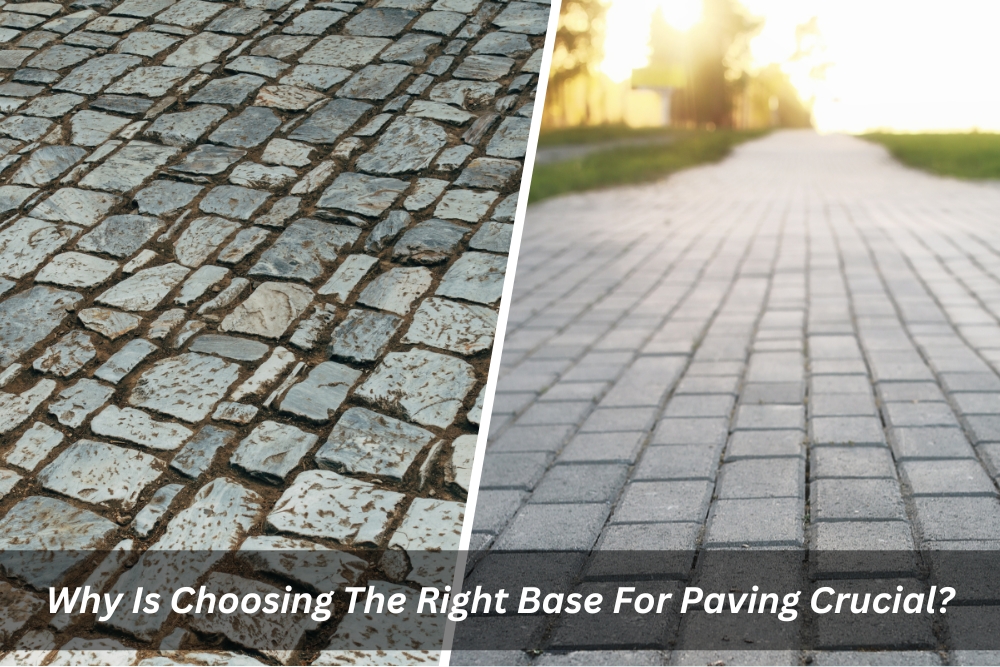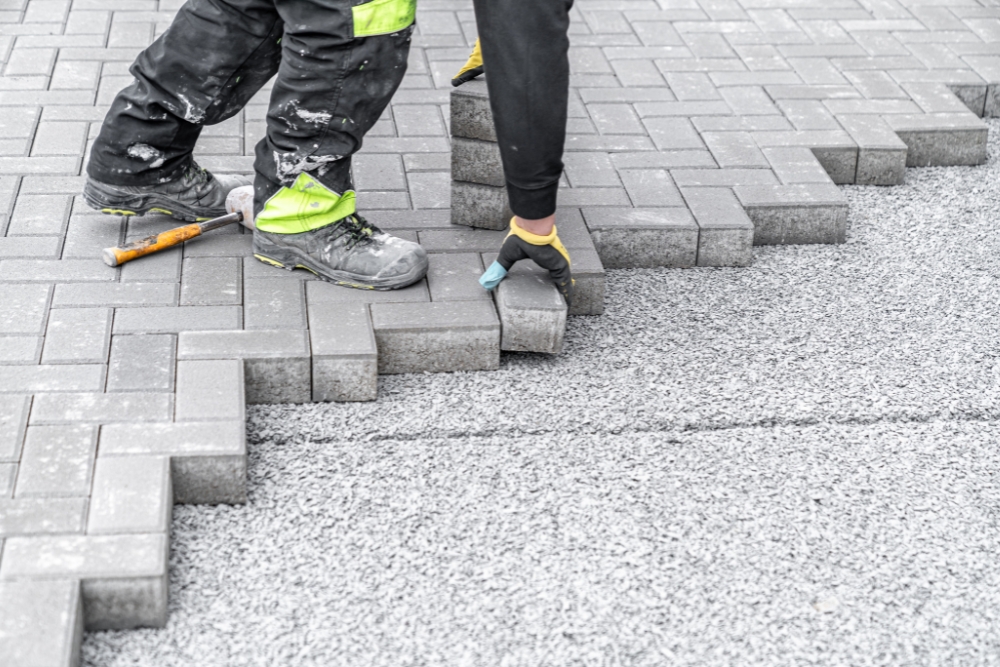
Ever dreamt of a beautiful, inviting patio or a smooth, sleek driveway? While the final surface gets all the glory, the real hero of any paving project lies hidden beneath the base. Choosing the right base for paving isn’t just about aesthetics; it’s the foundation for long-lasting durability and functionality. So, before you even think about picking out the perfect pavers, let’s delve into the crucial world of bases.
What are the different types of bases for paving?
Think of your base as the unseen superhero of your paving project. Different heroes have different strengths, and so do bases! Here are some common types:
- Crushed stone: The most popular choice for its affordability and versatility. Crushed stone comes in various sizes and can handle moderate traffic loads.
- Gravel: Similar to crushed stone, but with smoother, rounded pebbles. Good for drainage but not ideal for heavy traffic.
- Compacted soil: This can be a cost-effective option for low-traffic areas like walkways, but requires meticulous preparation and may not be suitable for all soil types.
- Concrete: The ultimate powerhouse for strength and stability, perfect for driveways, high-traffic areas, and even pool decks. However, it comes at a higher cost and requires professional expertise.
How does the right base affect your paving project?
Think of your base as the invisible support system for your paving. Choosing the wrong one can lead to a world of trouble, from unsightly cracks and uneven surfaces to drainage issues and even structural failure. Here’s why getting the base right matters:
- Strength and stability: A solid base ensures your paving can withstand weight and pressure without sinking or cracking. Imagine your dream driveway crumbling under your car’s weight – not a pretty picture!
- Drainage: A properly constructed base allows water to drain away efficiently, preventing pooling and potential damage to the paving and surrounding areas. Imagine your patio turning into a puddle after every rain shower – not exactly relaxing.
- Longevity: The right base extends the lifespan of your entire paving project, saving you money on costly repairs and replacements down the line. Think of it as an investment in the future!
Imagine your dream driveway crumbling under your car’s weight – not a pretty picture! This is why choosing the right base, especially for high-traffic areas like driveways, is crucial. For detailed information on asphalt driveway base preparation, check out our blog: How to pave a driveway with asphalt.
What are the signs of a failing base for paving?
While the initial list outlined some key signs, let’s delve deeper into the red flags that might indicate your base is in trouble:

Cracks and Uneven Surfaces:
- Severity matters: Fine hairline cracks might not be immediate cause for alarm, but larger, interconnected cracks or those increasing in size and number are major red flags.
- Location: Cracks along the edges of your paving, especially near joints, point towards issues with base stability or improper compaction.
- Unevenness: Localized dips or bumps can indicate settling due to base material breakdown or inadequate drainage.
Pooling Water:
- Frequency and duration: Occasional puddles after heavy rain might not be a concern, but persistent pooling, especially after moderate rainfall, indicates drainage problems.
- Location: Puddles forming near downspouts or specific areas could point to localized drainage issues related to the base.
- Standing water: This is a serious sign of poor drainage and can lead to base material erosion, weakening the entire structure.
Sinking or Tilting:
- Gradual vs. sudden: Gradual sinking or tilting might be less noticeable but still indicates a failing base. Sudden changes, however, require immediate attention.
- Affected areas: Localized sinking near specific pavers or edges suggests issues with the underlying base in those areas.
- Severity: Significant tilting or sinking can lead to structural damage to your paving and surrounding areas, posing safety hazards.
Additional Warning Signs:
- Movement of pavers: If individual pavers are shifting or becoming loose, it’s a strong indication of base instability.
- Vegetation growth: Excessive weed or moss growth between pavers can signal moisture problems and potential base material breakdown.
- Hollow sounds: Tapping on your paving and hearing a hollow sound can suggest voids beneath the surface, indicating base material erosion or compaction issues.
Remember: Early detection and intervention are crucial! If you notice any of these signs, don’t hesitate to consult a professional for a proper diagnosis and repair plan. Ignoring a failing base can lead to costly and extensive repairs down the line.
How do you choose the right base for your paving project?
Don’t worry, choosing the right base doesn’t have to be a superhero-level challenge! Here are some key factors to consider:
- Type of paving: Different paving materials have different weight requirements. For example, concrete needs a stronger base than gravel.
- Traffic load: Consider how much weight the base needs to handle, from occasional foot traffic to heavy vehicles.
- Soil conditions: The type of soil beneath your project plays a crucial role in drainage and stability. Consult a professional for recommendations.
- Local regulations: Check your local building codes for specific requirements regarding base materials and thicknesses.
How can you ensure a quality base installation?
Now that you know the importance of a strong base, how do you ensure it’s installed correctly? Here are some tips:

- Hire a qualified professional: Don’t underestimate the expertise needed for proper base preparation. Professionals have the knowledge and equipment to ensure a job well done.
- Get a detailed quote: Ask for a breakdown of materials, labour, and any potential challenges. Transparency is key!
- Inspect the work: Don’t be shy to ask questions and observe the installation process. Make sure the base meets the agreed-upon specifications.
Conclusion
So, there you have it! A strong, well-chosen base isn’t just some hidden layer beneath your beautiful paving – it’s the unsung hero, the silent guardian of its longevity and functionality. Ignoring this crucial element can lead to a string of unwanted guests like cracks, dips, and even structural damage. Don’t let your dream patio or driveway turn into a maintenance nightmare!
Don’t let a shaky base turn your dream paving project into a nightmare. Contact All Green Gardening & Landscaping today for a free consultation! We’ll work with you to ensure your paving project rests on a foundation as strong and reliable as your dreams. Remember, a well-chosen and properly installed base isn’t just an investment in your paving; it’s an investment in peace of mind and long-lasting enjoyment. Let us help you build a pavement that stands the test of time, starting with the hero beneath it all – the base!
